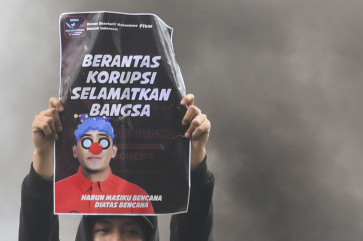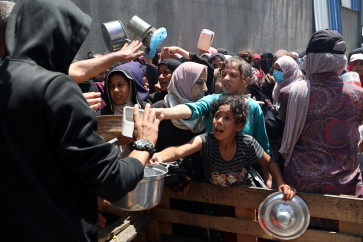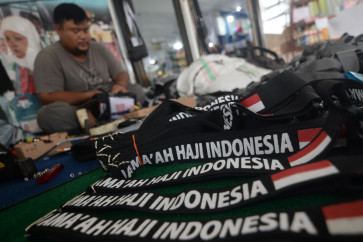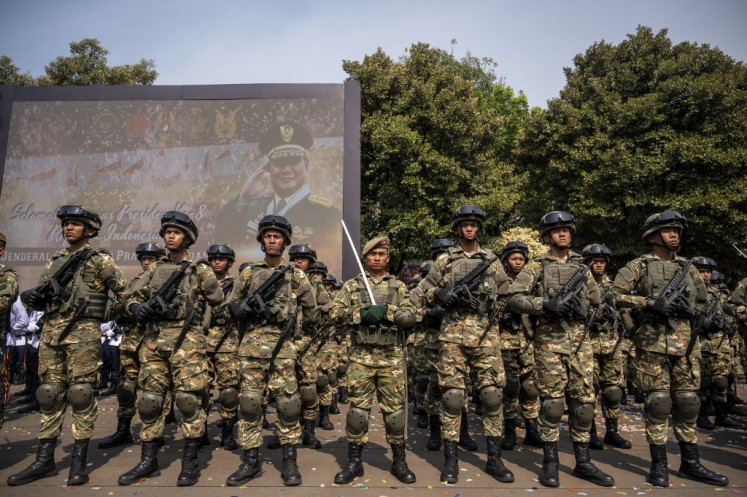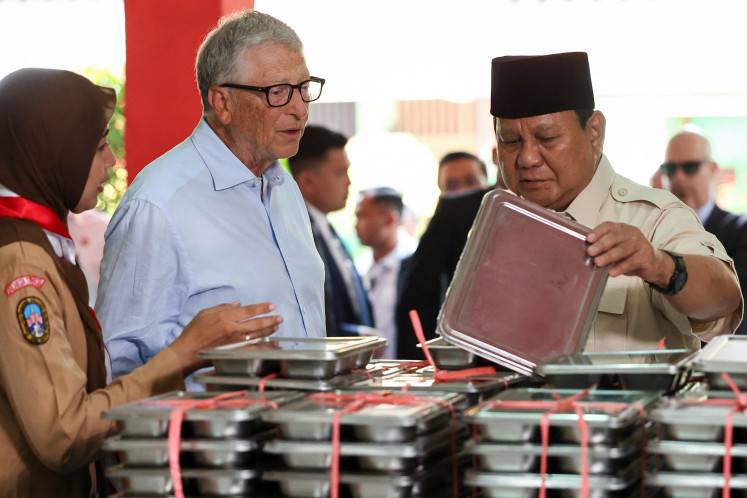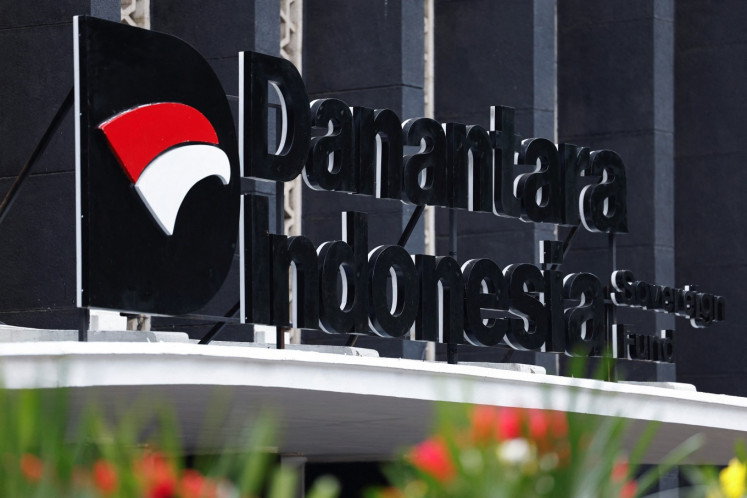A touch of India in Sumatra
Welcome: The Shri Mariamm on kuil Hindu shrine in Medan’s Indian district, Kampung Keling, is a major attraction for Hindus
Change text size
Gift Premium Articles
to Anyone

W
span class="caption" style="width: 398px;">Welcome: The Shri Mariamm on kuil Hindu shrine in Medan’s Indian district, Kampung Keling, is a major attraction for Hindus. JP/Apriadi Gunawan
A middle-aged woman of Indian descent stopped a motorized pedicab at the Gajah Mada crossroads in Medan, asking to be taken to Kampung Keling.
The driver needed no further instructions; he promptly headed to the area, around 800 meters from the main road of Gajah Mada.
For decades, Kampung Keling has been well known among citizens of the South Sumatran capital as a
settlement of ethnic Tamil people from India, clustered around Jalan Zainul Arifin.
Although the city administration changed its official name to Kampung Madras — the word keling connotes dark skin and raised objections among the local Indian community — the 10-hectare enclave remains popularly known as Kampung Keling.
Malni, 34, an Indian who lives and works in Binjai, said he was among those who disagreed with the name change.
“Kampung Keling is already well known, so I’m afraid many people are not aware of the new name,” added Malni, who still always calls it Kampung Keling.
A 58-year-old local Indian, Naran Sami, said that during the Dutch colonial period, and before Kampung Keling had become well known, the Indian settlement was called Petisah village, as it was located in the Petisah district.
Later, Petisah became known as Madras village because most of its residents were from the Southern Indian city of Madras.
But as the Indian people there were mostly dark-skinned, the village was dubbed Kampung Keling.
The history of Indian people’s entry to North Sumatra began in 1602, Naran Sami explained, when Dutch colonizers brought Indian plantation workers into Indonesia, particularly to North Sumatra and Aceh, to work on their estates.
A large number of the Indians were placed in various parts of Medan and, over time, they gathered in Petisah to form the now well-known Indiatown.
Before Indonesian independence in 1945, the Indian flavor of the town was reflected in its Indian city-inspired street names: Jalan Kalkuta, Bombay, Nagapatam, Ceylon and Madras.
One of Kampung Keling’s main attractions for Indians is a Hindu shrine, which history says was
built by Indian religious leader Shri Maryaman in 1881. Now the Hindu place of worship, which still stands solidly on Medan’s Jalan Zainul Arifin, is visited by hundreds of Hindus each day to perform their religious rituals.
Nilekanden, a 23-year-old who works at the shrine, said the building was open from 6 a.m. to 8 p.m. with a break from 12 p.m. to 2.15 p.m.
“It’s always packed with Hindus wishing to attend prayers,” he said. “They come not only from Kampung Keling but also from other cities like Binjai, Deli Serdang and Pematang Siantar.”
Another powerful symbol of the local Indian presence is a school called Khalsa, built next to the
shrine in the pre-independence period by a foundation under the management of a Sikh group from Northern India. The school was once famous as the only one in Medan that used English as the language of instruction.
But despite its Hindu majority, Kampung Keling is not an exclusively Indian enclave, Naran Sami pointed out, with Muslims, Buddhists and Christians among the residents. And they all — ethnic Indians, Chinese and Malays — live peacefully side by side.
“The Tamil community’s emotional bond is quite strong despite the diverse faiths,” Naran Sami, now chairman of North Sumatra’s Parisada Hindu Dharma Sudarsa (Hindu Council), said.
“Peaceful relations between the Indians and their fellow Chinese and Malay residents have grown out of the latter two’s high tolerance since long ago,”
The Indian Tamil population in North Sumatra is at around 35,000, he added; most live in Medan, with others in Binjai city, Deli Serdang regency, Pematang Siantar and Tebing Tinggi cities, and Asahan regency.
But economic reasons are driving long-term residents out of their traditional and central location.
“The number of Tamil people in Kampung Keling has dropped to about 4,000 from more than 10,000 previously,” he said.
“They have mostly moved to the outskirts of Medan.”

